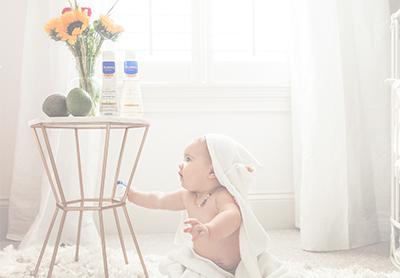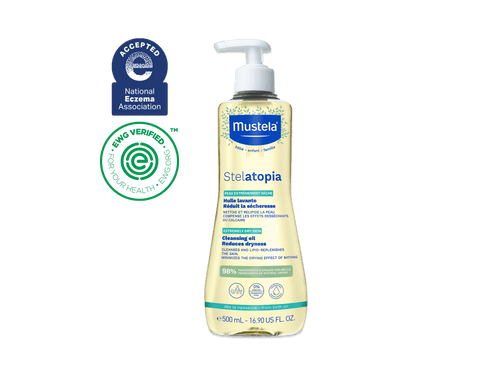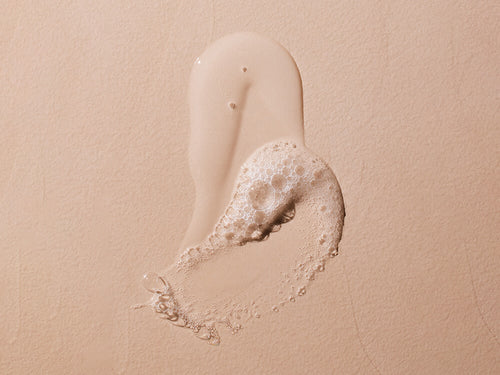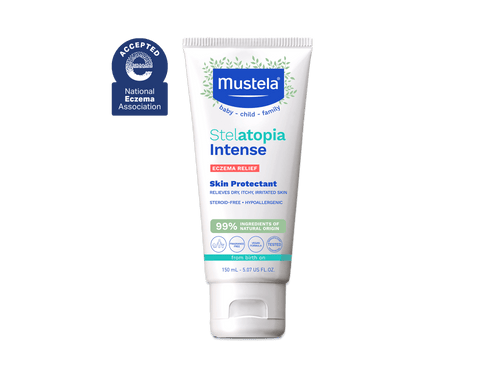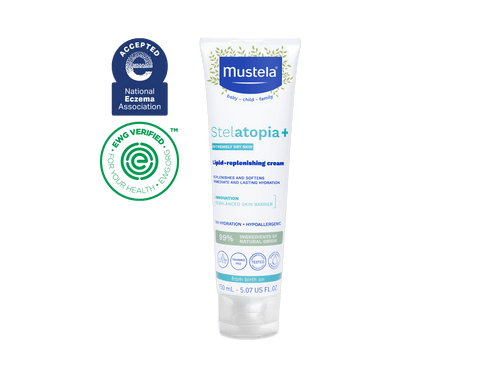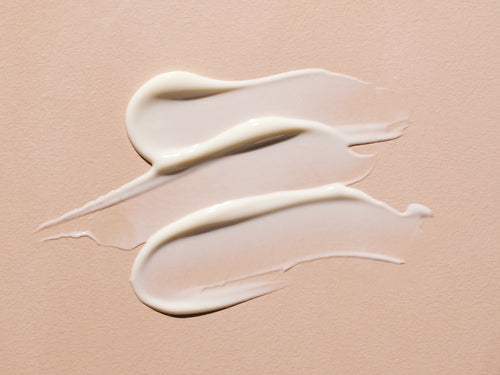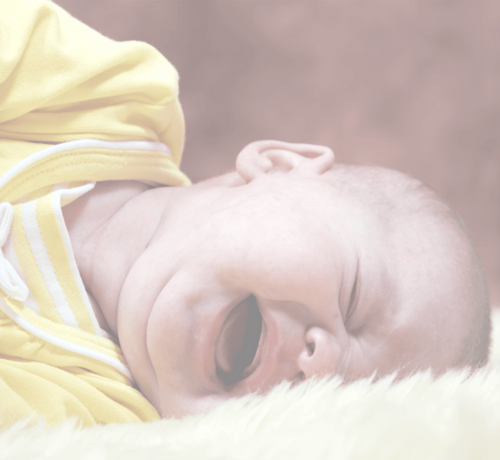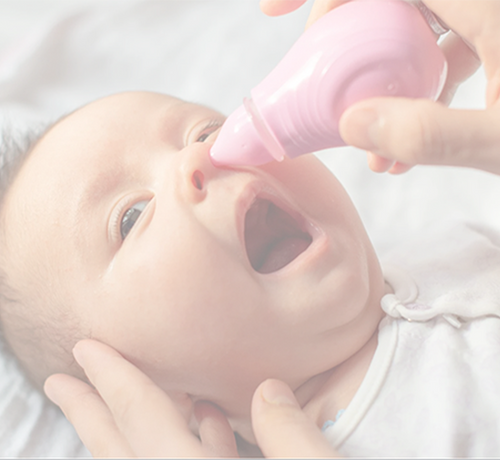When your baby is first born, their skin is so soft and smooth that you’ll just want to caress them all day. But in the months that follow, your little one’s wonderful-to-touch skin can transform from normal to dry—or even eczema-prone—overnight.
If you’re looking for information about eczema-prone skin, Mustela’s experts have put together a whole series of articles that deal with everything from the first signs of eczema to proper clothing to outside activities and more! We suggest starting with our article A Parent’s Guide To Baby Eczema: Causes, Symptoms, Treatment & Prevention.
But for now, let’s focus on dry skin and how it differs from both normal skin and eczema-prone skin. In this article, we’ll also address the best ways to treat your baby’s dry skin so they can be happy, healthy, and comfortable.
Before we get to the best skincare practices for your little one, it’s important that you understand how to recognize dry skin and a bit of the underlying factors that cause it.
Recognizing Dry Baby Skin

Your baby’s skin is more than just a super-soft, super-cute part of their body for you to love. It also serves to protect your baby from their environment and to help them interact with you and the things around them.
Additionally, your baby’s skin acts as a shield against bacteria, allergens, dirt, toxins, and even the sun’s harmful ultraviolet (UV) rays. Without this protection, your baby’s body wouldn’t be able to grow and function as it should.
Your little one’s skin is also the source of their sense of touch. When your baby’s skin comes in contact with a hot, cold, hard, or soft surface, the feeling of that surface gets transmitted through their skin via nerve conduction to the brain. It’s this sense of touch that allows your baby to learn, grow, and connect with you on both an emotional and physical level. The skin is that important.
Normal skin performs these important functions while still staying soft and smooth. Sometimes, though, your baby’s skin “malfunctions” slightly and becomes dry. Here’s what dry baby skin looks like:
- Dry skin is rough to the touch or can appear flaky
- Dry skin can crack
- Dry skin can peel
- Dry skin is hard
- Dry skin can feel irritated and even painful
- Dry skin can be sensitive to the touch
Thankfully, the reason your baby’s skin is dry is really nothing to worry about. That’s because the best treatment for dry skin is both simple and effective. But before we outline treatments options, let’s discuss the science behind dry skin so you understand why it’s happening to your baby.
Understanding The Science Behind Dry Skin
Your baby’s skin is covered by a protective layer of oil and water known as the hydrolipidic layer. The hydrolipidic layer serves to protect your baby’s skin from external environmental damage and keep moisture from evaporating into the atmosphere.
Your baby’s hydrolipidic layer won’t fully mature until they are around two years old. For those first two years, your little one’s hydrolipidic layer will be thin and even nonexistent in places. Don’t worry; this is normal.
The hydrolipidic layer will eventually even out and thicken up. Until it does, your baby will be more susceptible to irritation and dry skin caused by evaporating moisture and environmental pollutants.
Dry Vs. Eczema-Prone Skin

Usually, your baby’s skin can regulate itself. But sometimes, it can go from normal to dry or even eczema-prone in a very short amount of time. Dry skin occurs when moisture evaporates off the surface of the skin faster than it can be replaced. So if you imagine that layer of oil and water on your baby’s skin, picture a “hole” that has formed and too much water is escaping through it.
Eczema-prone skin, on the other hand, is dry skin (too much water escaping through a “hole” in the protective barrier) that has been irritated by an allergen. That allergen might be pollen, dust, dirt, even high or low temperatures. Whatever the trigger, eczema-prone skin reacts by forming red, itchy, swollen patches at the site of contact.
If your baby has dry but not eczema-prone skin, there’s no need to worry about allergens. You just need to be concerned with keeping your little one’s skin moisturized. That leads us to the best treatment for dry skin.
The Best Treatment For Dry Baby Skin

As we discussed above, the cause of dry baby skin is too much moisture escaping through your little one’s underdeveloped hydrolipidic layer. The best way to prevent that water from escaping is to apply a moisturizing product to your baby’s skin every day. We recommend Mustela’s Nourishing Lotion with Cold Cream or Mustela’s Nourishing Cream with Cold Cream.
These gentle-yet-powerful moisturizers contain avocado perseose and a specially-designed dermo-nutrition complex, which keep your baby’s skin healthy by:
- Protecting it from harsh environmental factors such as UV rays, wind, dust, chemicals, pollen, and bacteria
- Promoting the development of the hydrolipidic layer
- Preventing water from evaporating off the skin’s surface
- Preserving cell reserves
The last point is particularly important because it’s those cell reserves that allow your baby’s skin to rejuvenate and repair quickly and efficiently. You can apply Mustela’s nourishing creams to all parts of your baby’s skin (face, hands, wrists, elbows, knees) multiple times a day to aid in this healing process and relieve the discomfort caused by dry skin.
What’s more, relief doesn’t end with the creams and lotions. You can also treat dry baby skin in the bath with moisturizing products like Mustela’s Bath Oil, Nourishing Cleansing Gel With Cold Cream and Gentle Soap with Cold Cream Nutri-Protective.

You can even treat and prevent your little one’s dry skin on the go with Mustela’s Nourishing Stick with Cold Cream. This unique, travel-friendly moisturizing stick protects your baby’s lips and cheeks with natural cold cream, lipid-replenishing ceramides, and soothing shea butter.

Don’t let your little one suffer any longer. Treat dry baby skin with a Mustela moisturizing cream, bath oil, or moisturizing stick. Better yet, use all three to ensure that you and your baby are happy, healthy, and comfortable no matter what.


